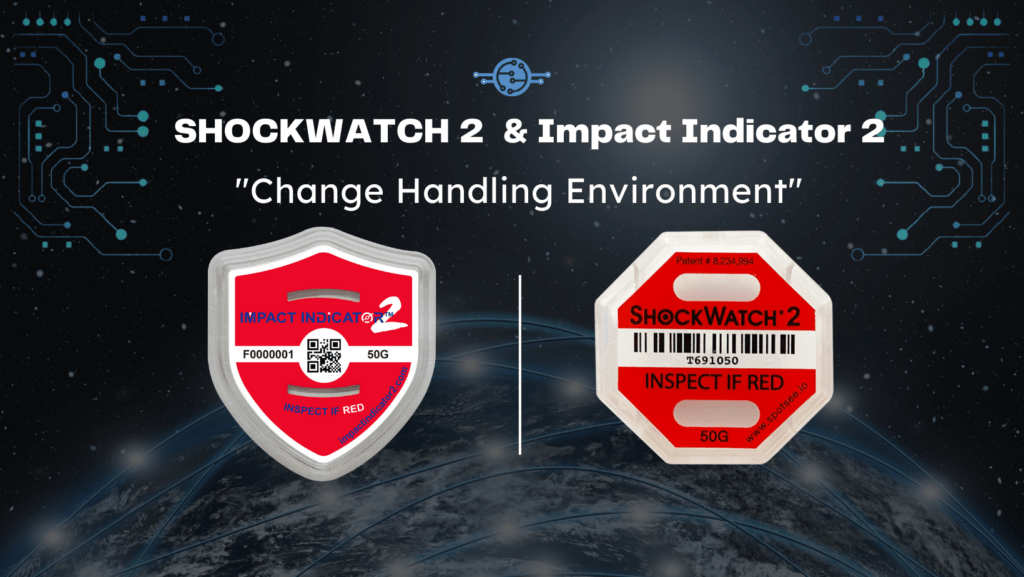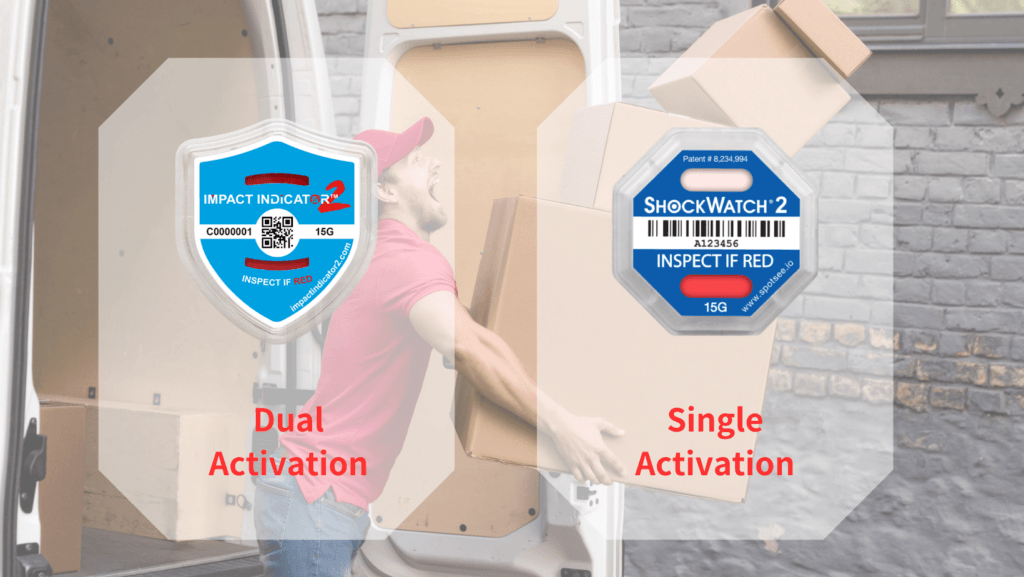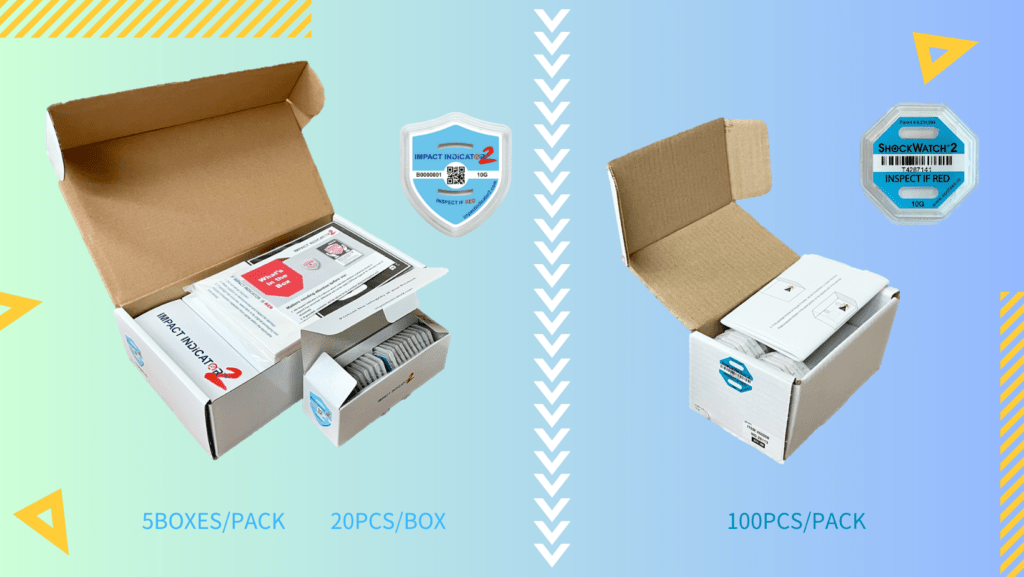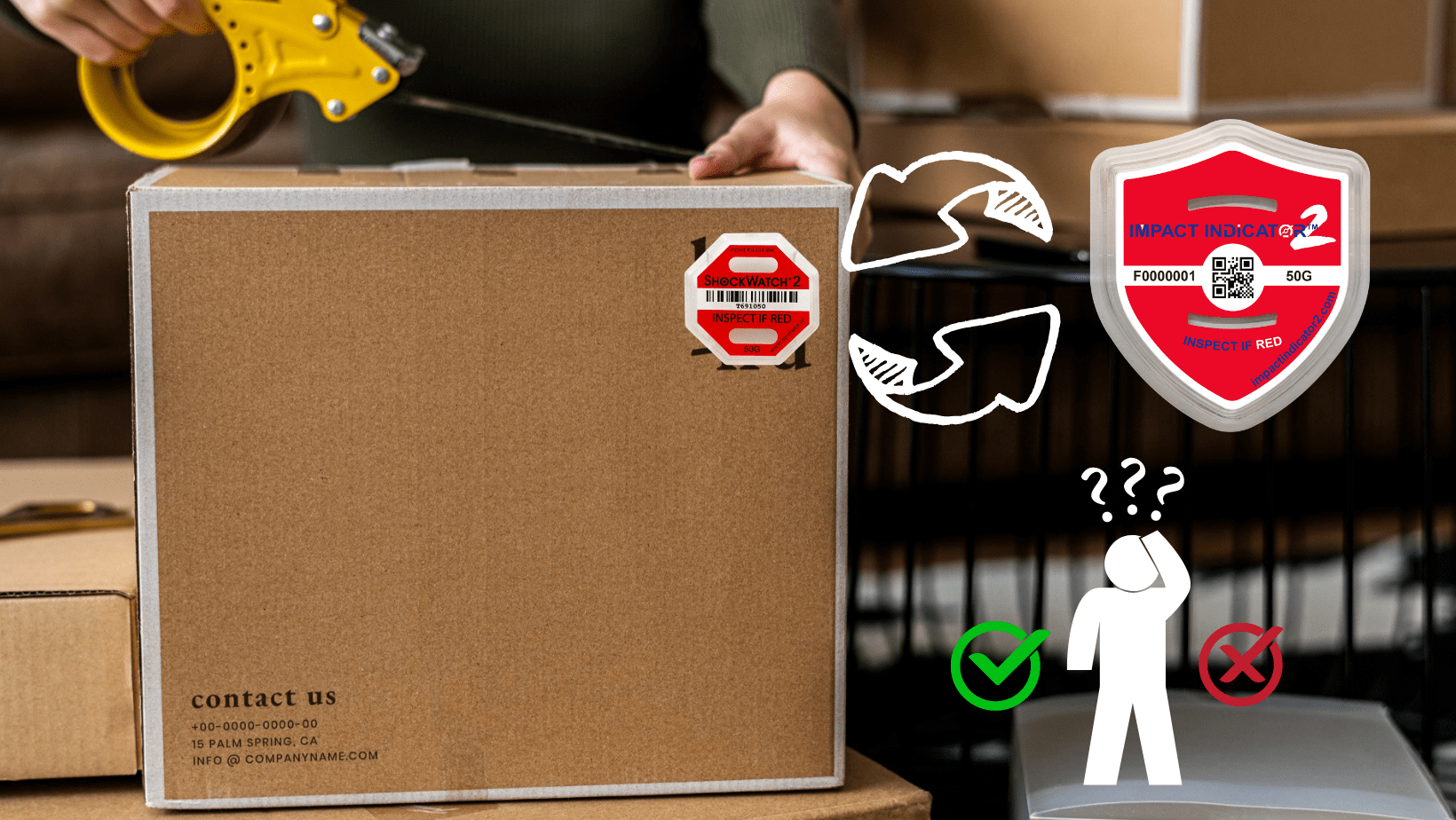ShockWatch indicator and TiltWatch XTR are commonly used to monitor and detect potential damages in industrial settings, ensuring the safety and integrity of goods during transit is of utmost importance. However, some users might consider replacing ShockWatch with Impact Indicator 2 for various reasons. We will explore the differences between the two devices, their features, and potential problems that may arise during the replacement process.
What is ShockWatch sticker?
ShockWatch stickers are mechanically-activated devices that turn bright red when an impact occurs, which indicates when the packaging has been exposed to a potentially damaging impact during transit or in storage. It is a widely used impact indicator that provides visible evidence of potential mishandling.
ShockWatch stickers also have educational and experimental uses. For example, in MythBusters, ShockWatch stickers are used to see if a hamster ball can break Buster’s fall and to detect the magnitude of the impact force falling from the air.
In fact, ShockWatch label has 2 different versions. One is ShockWatch 1, another is ShockWatch 2. To see the exact difference, please contact us for more details.
The most obvious differences are the detecting direction and go/no-go design. The former is a difficult problem for users and distributors, who must ensure the integrity of the product before use; while the latter is much more convenient for distributors, eliminating the problem that the product of the previous generation was damaged before use. At present, the two generations of products have their own supporters. In the following, we will analyze between Impact Indicator 2 and ShockWatch 2 one by one.

ShockWatch 2 vs. Impact Indicator 2
ShockWatch 2 is a product of Spotsee Inc., mainly produced in China, Mexico and the United States; while Impact Indicator 2 is a product of ShockSeen Inc., mainly produced in Asia. The functions of these two products are the same. They are mechanically activated and turn bright red when impacted. The operating principle is similar, only the appearance and some functions are different.
How do you use ShockWatch 2 and Impact Indicator 2?
Simply place the ShockWatch 2 on a flat surface of the item being handled, and put the frame label onto your ShockWatch 2 to fix to the item. It is worth noting that it is wrong to put it on the stretch film, instead, you should use stretch film after placing it. ShockWatch 2 can detect mishandling no matter where the label is placed on the item. However, placement at a corner is recommended for the best sensitivity. ShockWatch 2 is bi directional vertical response that detects one axis impact/drop force. To detect 3 axises for full detections, place one vertically in the front, another horizontally to the side, and the other horizontally on the top.
ShockWatch 2 indicators are available in a variety of sensitivity levels, from 5G to 75G, to help you select the label best suited to your needs. Indicator sensitivities range for use with a variety of items, from heavy furniture to sensitive electronics, allowing you to choose the indicator that best fits your needs. To review the indicator specifications for your shipment, see the selection guide below. The companion labels instruct receivers on the proper procedures for processing damaged shipments with 3 easy steps.
If a shipment is handled roughly, the plastic centerpiece automatically moves, indicator turns bright red indicating that the product has potential damage. Once activated, the label cannot be reset or reused. Similarly, the usage of Impact Indicator 2 is as same as ShockWatch 2.
Activation
If a shipment is handled roughly, the plastic centerpiece automatically moves, indicator turns bright red indicating that the product has potential damage. Once activated, the label cannot be reset or reused. Similarly, the usage of Impact Indicator 2 is as same as ShockWatch 2.
Technical Data Sheet
According to the official TDS, the only difference is their dimensions. Others are all the same.
| ShockWatch 2 | Impact Indicator 2 | |
| Design | Octagon | Shield |
| Dimensions | 42.9X42.9mm | 42.5X47.5mm |
| Frame Label | 97X97mm | 133X135mm |
| Activation Method | Armable | |
| Operating Temperature Range | -25°C to 80°C | |
| Storage Conditions | 20°C, 1 ATM 0 – 99% RH Non-Condensing | |
| Impact Sensitivities | 5G, 10G, 15G, 25G, 37G, 50G, 75G | |
| Impact Duration | 0.5 to 50 msec | |
| Accuracy | +15% at 20°C / 68°F, 1 ATM | |
G levels
G levels response charts are as the same as each other. As per dropping test, the indicators respond the same. However, the only difference is that Impact Indicator 2 is able to identify the possible direction of the impact.
What is G of ShockWatch?
Each ShockWatch indicator and Impact Indicator 2 have a corresponding “G”, which means the indicator activates when it is subjected to a shock acceleration exceeding the G level. The larger the number is, the greater the shock force is required.

Buy ShockWatch 2, ShockWatch 2 Price
ShockWatch 2 and Impact Indicator 2, unlike ShockWatch 1, is a go/no-go device that eliminates before-use activation during shipment, as a result, shipping limitation is less than ShockWatch 1st gen which allows you to purchase online or overseas more easily.
| ShockWatch 2 | Impact Indicator 2 | |
| Packaging | 100PCS/Box | 20PCS/Box 100PCS/Box |
| Price | Contact Us for the best Price! | N/A |
* The price is based on the average after investigation and research. It doesn’t represent the actual selling price but is for reference only.
Import HS Code
The import HS code for both ShockWatch 2 and Impact Indicator 2 is 9031.80. However, some clients use 392690 for local import purposes. If these 2 codes lead heavy tax and duty, you should find others.

The Smooth Shift from ShockWatch 2 to Impact Indicator 2
Safeguarding goods from potential damages is crucial. ShockWatch indicators and TiltWatch XTR have long been reliable tools for monitoring impacts during shipping and storage.
However, the emergence of the Impact Indicator 2 has led to consideration among users for potential replacements. ShockWatch 2 and Impact Indicator 2 share similar operating principles, comparable functionalities, and mechanically activated, differing mainly in their appearance and identity of the possible direction of impact.
Impact Indicator 2’s packaging and pricing structure present advantages for online or overseas purchases, making it a more convenient option for distributors and users.
In summary, choosing between ShockWatch 2 and Impact Indicator 2 largely depends on individual preferences and requirements. Both devices serve the critical purpose of detecting impacts, and users can make informed decisions based on their specific needs.



